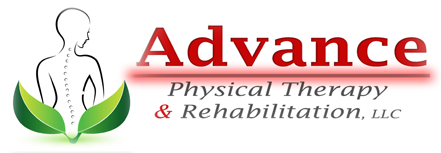
22 Jul How Physical Therapy Can Help with Arthritis
There are quite a few different kinds of arthritis, and evidence indicates that physical therapy can help with all the varied forms of this condition. In fact, guided physical therapy may be even more effective for arthritis than exercises you do at home, and physical inactivity plays a big role in the development of arthritis in the first place. Find out more about physical therapy for arthritis, and learn some simple exercises that will help you fight back against the symptoms of this painful condition.
Types of Arthritis
Arthritis comes in dozens of different forms. Here are some examples of common types of this condition:
1. Rheumatoid Arthritis (RA)
Rheumatoid arthritis is a type of autoimmune disease that causes your immune system to view your joint tissue as an invading substance. The inflammation that RA causes can permanently alter the bone structure in your hands and feet, and this condition causes pain and stiffness that is often worse during the morning.
2. Osteoarthritis
Osteoarthritis is the most common form of this condition, and it’s caused by general wear and tear at your joints. This type of arthritis can occur in any of your joints, and osteoarthritis is exacerbated by joint injuries, age, and obesity.
3. Psoriatic Arthritis
Psoriatic arthritis is a type of immune disease that causes inflammation in your skin and joints. In addition to degrading your cartilage and causing joint pain, psoriatic arthritis also causes huge, painful blemishes on your skin.
4. Lupus
Lupus is a rare inflammatory condition that’s more common in younger women. It’s considered to be a form of arthritis since it causes inflammation in your joints, but this condition also causes inflammation throughout the rest of your body.
5. Gout
Gout is an arthritic condition that usually occurs in your toes. It’s caused by a buildup of uric acid, and it can permanently damage your joints if it’s left untreated.
Is Physical Therapy Effective for Arthritis?
In most cases, medical practitioners recommend medication as a first-line treatment for arthritis. However, evidence shows that arthritis-targeted physical therapy is also highly effective in relieving the symptoms of this condition.
Poor physical habits can lead to the development of certain types of arthritis, and increased physical activity can reduce the symptoms of this condition. Plus, physical therapists have a variety of tools at their disposal that may be able to reduce the symptoms of arthritis.
There’s a strong connection between your overall physical health and the onset of arthritis. For instance, if you’re overweight or you have a poor diet, you’re more likely to suffer from this condition. Physical therapy can improve your overall physical health, which will help your body heal and fight back against the symptoms of arthritis.
How Does a Physical Therapist Help with Arthritis?
To determine the extent of your arthritic symptoms, a physical therapist will perform a full physical exam. This exam might involve palpation, or the application of pressure, and your physical therapist may also determine your range of motion (ROM) by extending or flexing your joints.
To get a better idea of the situation in your arthritic joints, your physical therapist may order X-rays, MRIs, or other forms of imaging tests that can see inside your affected joints. Your physical therapist may also have you perform functional mobility tests like climbing stairs or running to get an idea of how your symptoms impact your day-to-day life, and then it will be time to move onto treatment.
To help you with your arthritis symptoms, your physical therapist may guide you through a variety of exercises. Your PT practitioner may also use massage therapy or other forms of pressure application to reduce strain on your joints. You will most likely receive a list of exercises to perform at home every day.
Best Physical Therapy Exercises for Arthritis
In general, it’s best to avoid high-impact exercises when you’re trying to improve the symptoms of arthritis. Certain types of arthritis, such as osteoarthritis, were caused by impacts to your joints in the first place, so avoiding high-impact exercises can reduce strain on arthritic joints. Here are some examples of exercises your physical therapist might prescribe to help with your arthritis symptoms:
1. Swimming
Swimming is the perfect example of a low-impact exercise that helps you build up muscle strength. When you’re in a pool or lake, water keeps your body buoyant, which allows you to exercise without having to worry about exposing your knees, shoulders, or hips to any unnecessary impacts. Relaxing and exercising in the water is therapeutic in a variety of different ways, and water aerobics are critical in many types of physical therapy regimens.
2. Range-of-Motion Exercises
When moving your joints in a certain way causes pain, it’s natural to want to avoid those uncomfortable motions. Performing range-of-motion exercises, however, may reduce strain on arthritic joints and improve your flexibility.
3. Strength Training
The stronger your muscles are, the less strain you’ll put on your joints. Strength training can take the pressure of your arthritic joints, and when your muscle mass improves and your mobility increases, you’ll notice reduced arthritis-related pain. As with all treatments for arthritis, it’s important not to overdo it; no one is asking you to become a champion weightlifter, but building up muscle strength has been proven to reduce the symptoms of arthritis.
Physical Therapy and Arthritis
Physical therapy can help with a lot of different conditions, and it appears that physical therapy for arthritis is a highly effective way of keeping the symptoms of this condition in check. Just remember that maintaining healthy physical activity is one of the best ways to prevent arthritis; while expert physical therapists are always standing by to help when your arthritis symptoms get out of hand, become more active today to prevent this condition and reduce its symptoms.




Sorry, the comment form is closed at this time.